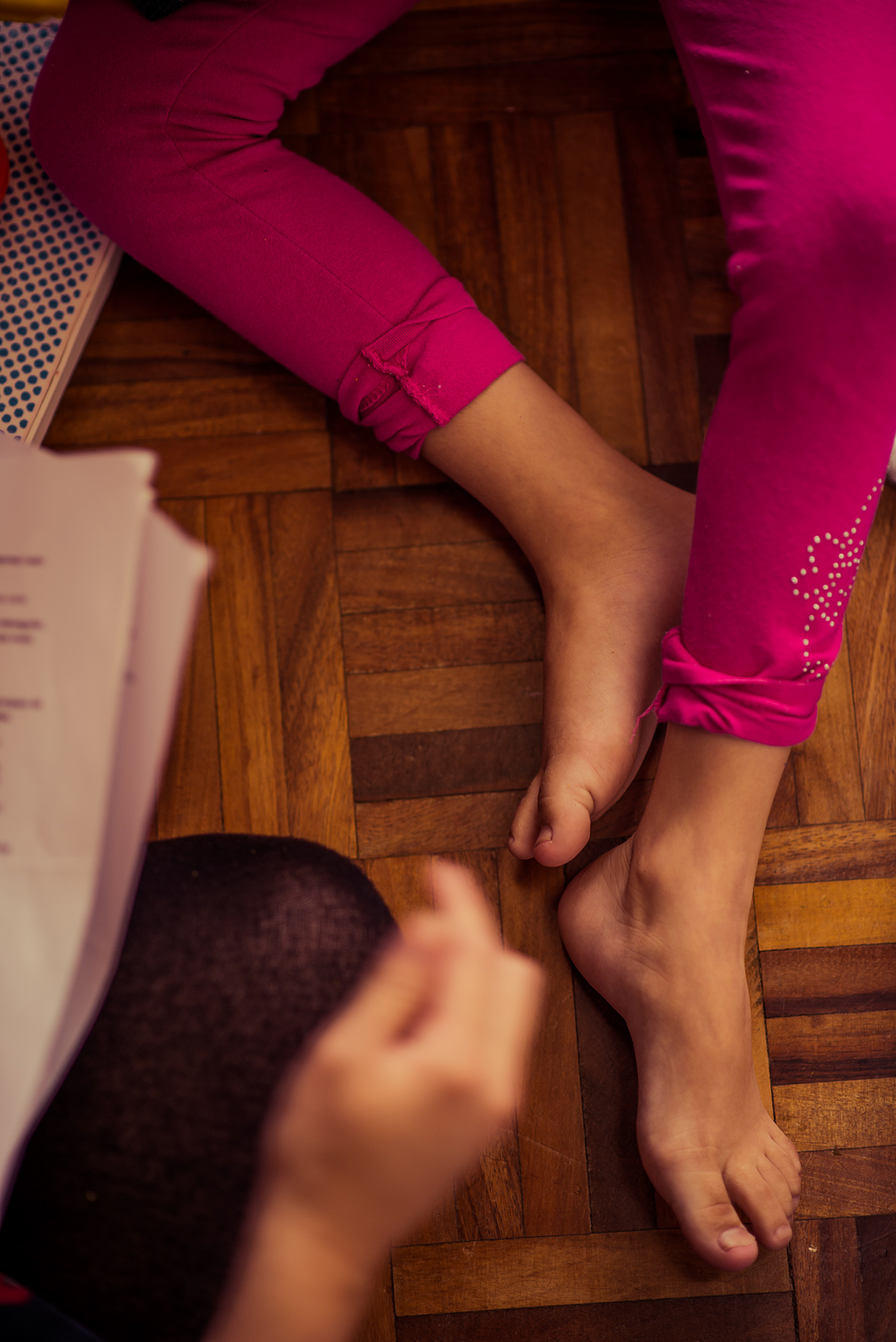This was my final graduation project and consists of the development of a sensorial project for children 6 to 8 years old who are visually impaired. This project’s main goal is to stimulate creativity and help to improve their development.

Credits
Design: Mariana Yatsuda Ikuta
Tutor: Régio Pierre da Silva
Animation: Eric Pautz
Photography: Thandra Leães Rodrigues
College: UFRGS
PROCESS
The toy market has developed considerably in recent times, with toys focused on different child development stages. Despite this, little, or nothing, was established in the market, on an industrial scale, in order to help the development of those born with a disability, especially the blind. The dichotomy of this statement lies in the fact that while playing is important for any child, for the child with visual impairment it is fundamental.
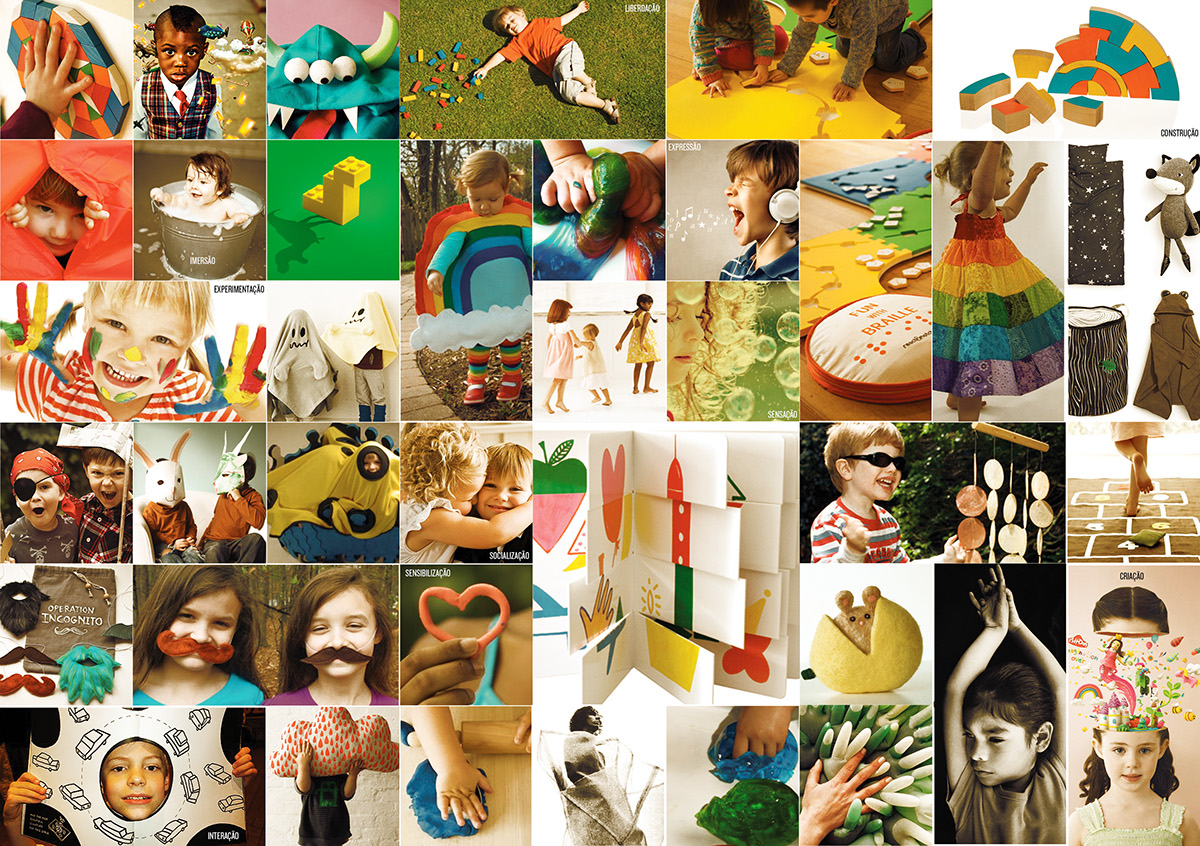
Moodboard for this project.
I created a game with different steps to develop different ways of using children creativity with storytelling.

The game gives different "body 'monster' parts" for the children to create their own character. It has limited amount of pre-defined caracteristics so the children could be really free to impose any idea they might have for their format, quality and personality.
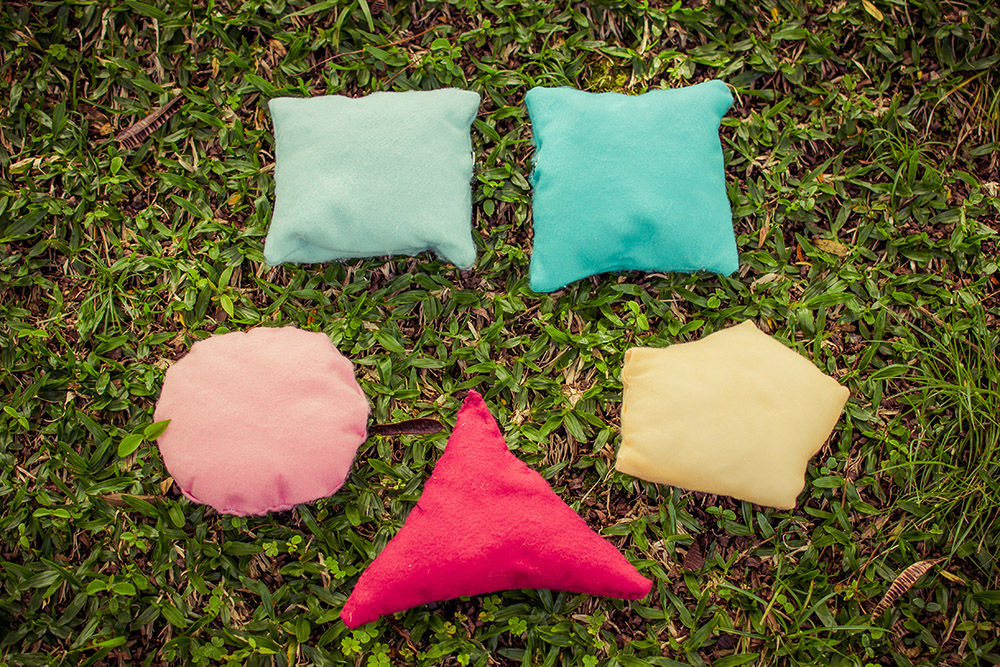
The base was made of felter and had a soft filling. Their shapes had basic geometric forms to help to improve the cognitive development of perception and help to use this as a learning device in the most simple way.

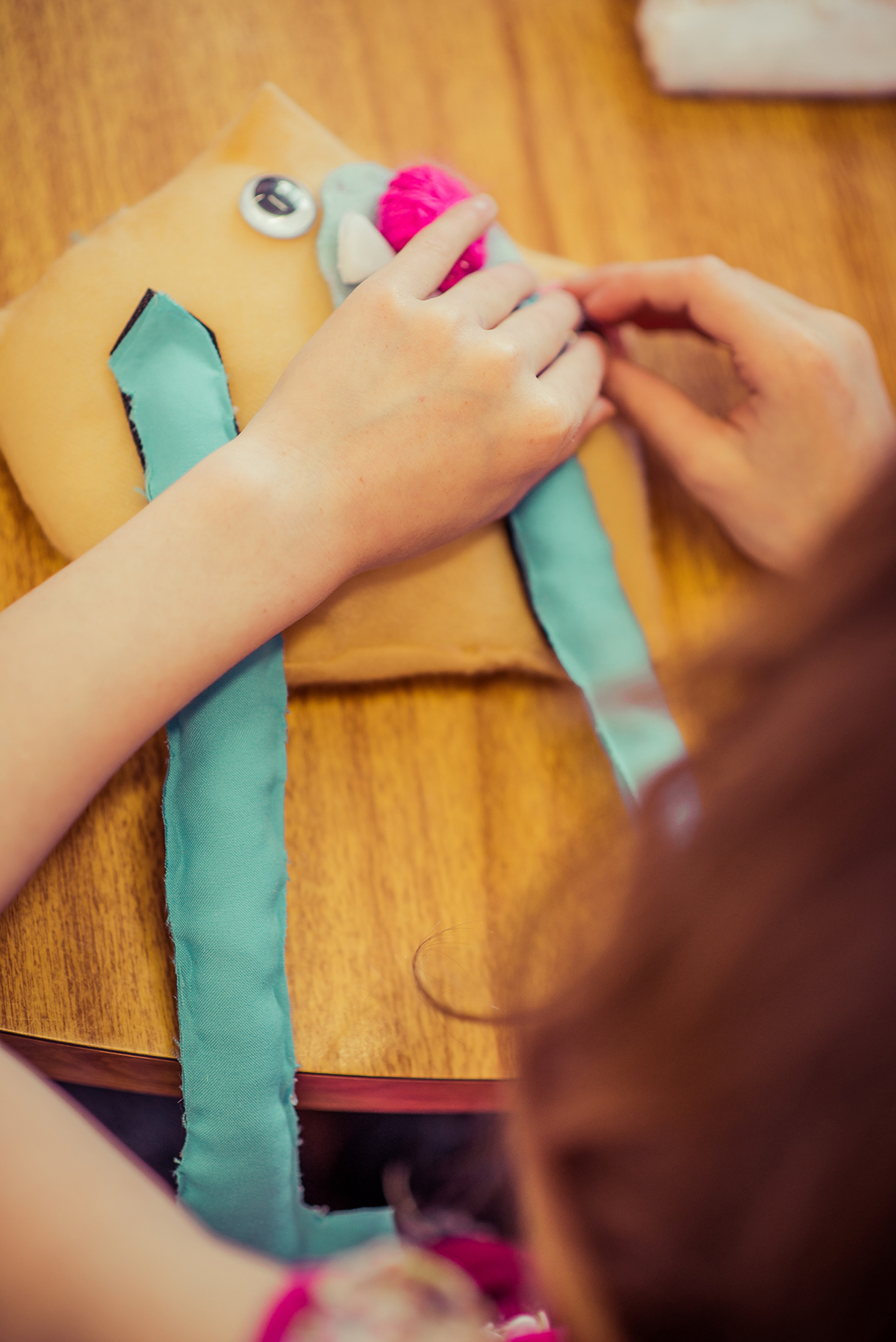

Every accessory, legs, arms, eyes (etc) had a velcro, allowing the child to pin it anywhere he/she wanted.
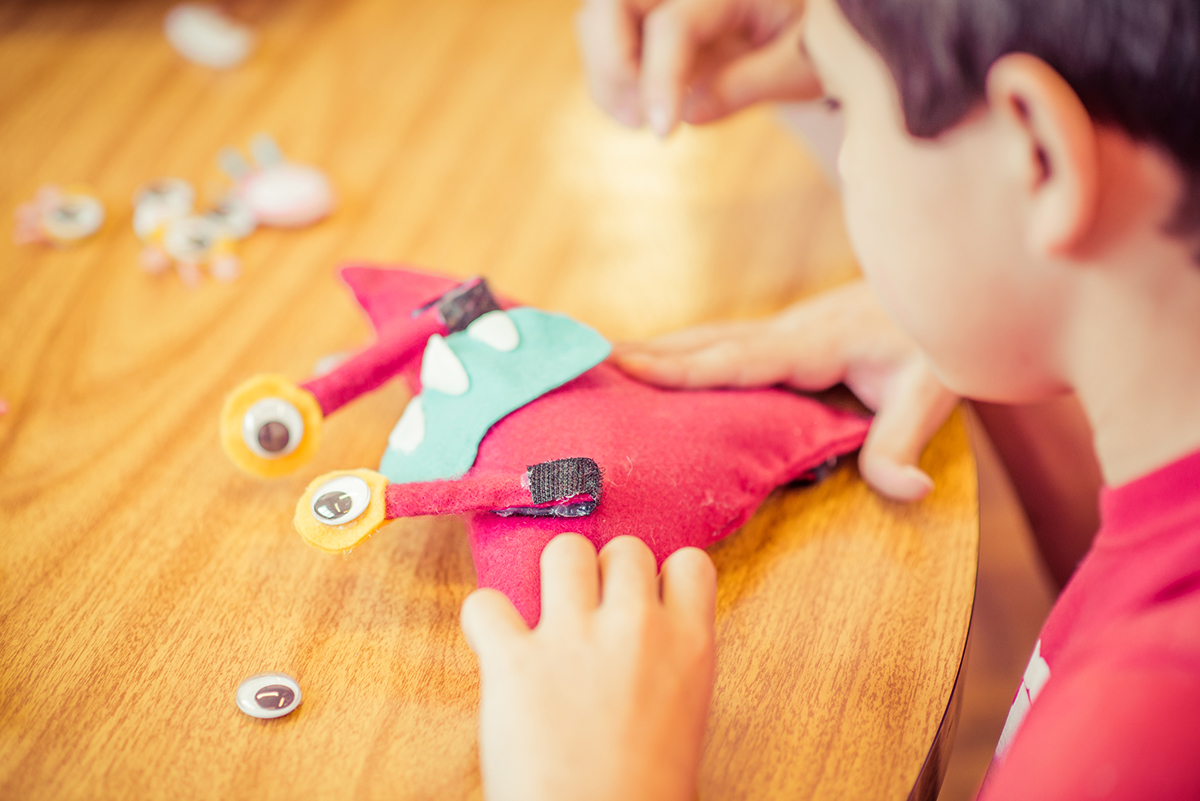
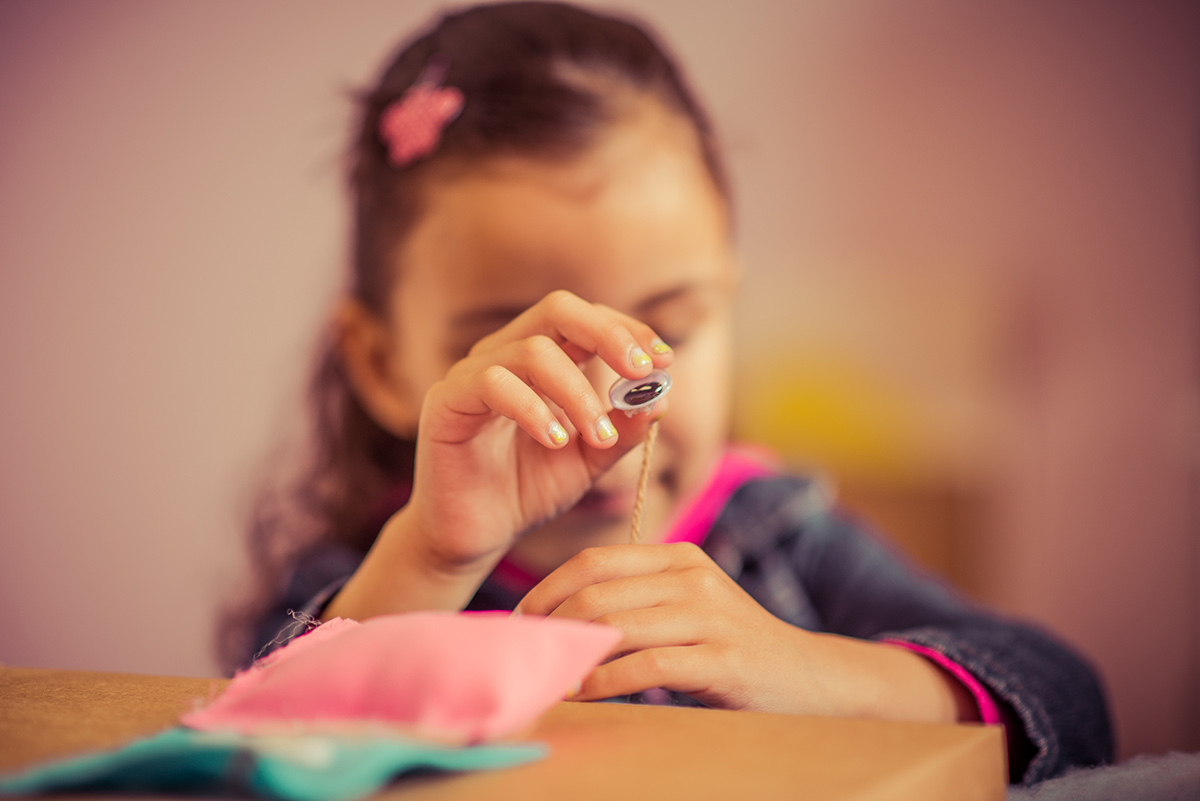
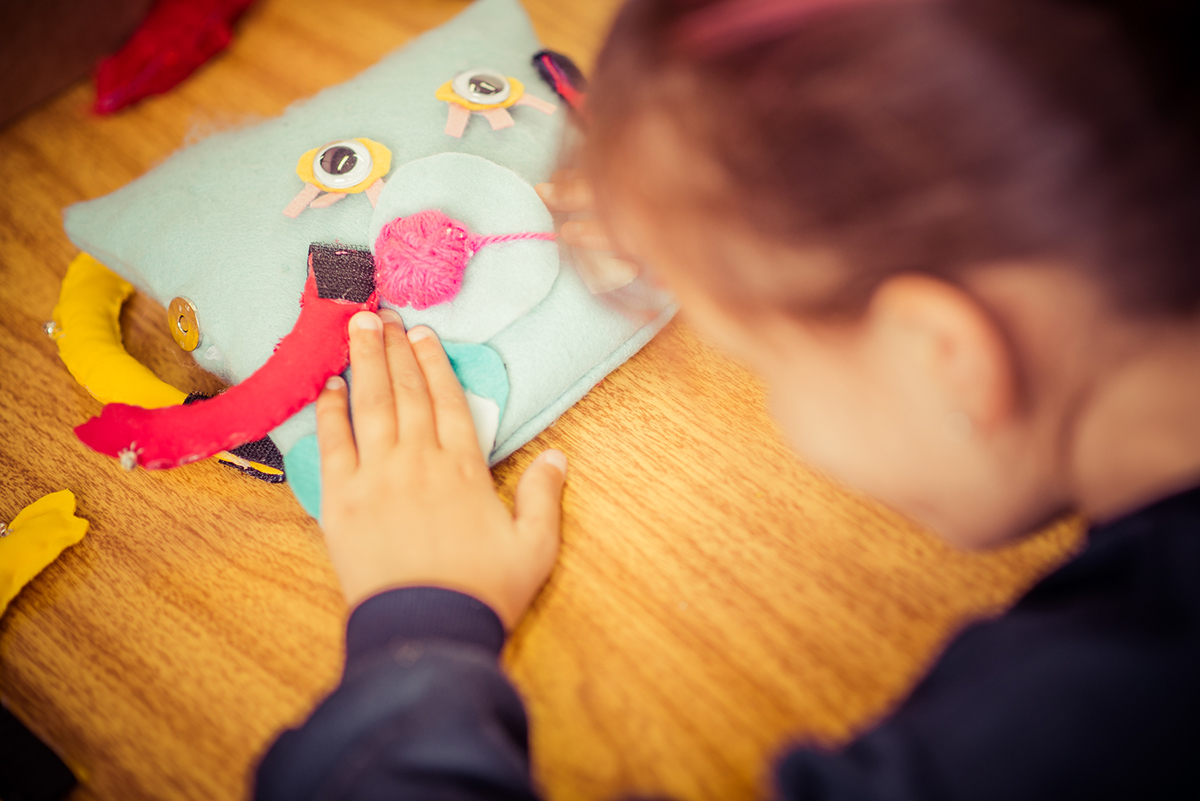
It was created with different groups of things the child could use to form their character: the base, the arms/legs, the eyes and accessories that could form mouths, noses, hats, ears, hair, etc.
For each group, a different kind of fabric and a different filling were used. This helps the child distinguish every element tactually in a very intuitive way. Additionally, rattles were put inside the arms/legs group to give them some sound even in the movement afterwards, during play.

Each child gave a different name, gender and what kind of animal it would represent.

Here are some graphic examples of really random and funny characters created with the elements of the game.

Here are some "real ones" done by children with visual impairment.




Based on the story of "The three little pigs", I created the story "The three construction friends". Giving sounds, actions and telling parts of the story I constantly asked questions about what they should do and what was going to happen.
The child having a repertoire about the story was an important aspect because it is much easier to create something based on something you are already confortable with than trying to create something from scratch.

The modules form a rug so the children can sit on it, while also having interactive elements that improve motor skills and cognitive development.
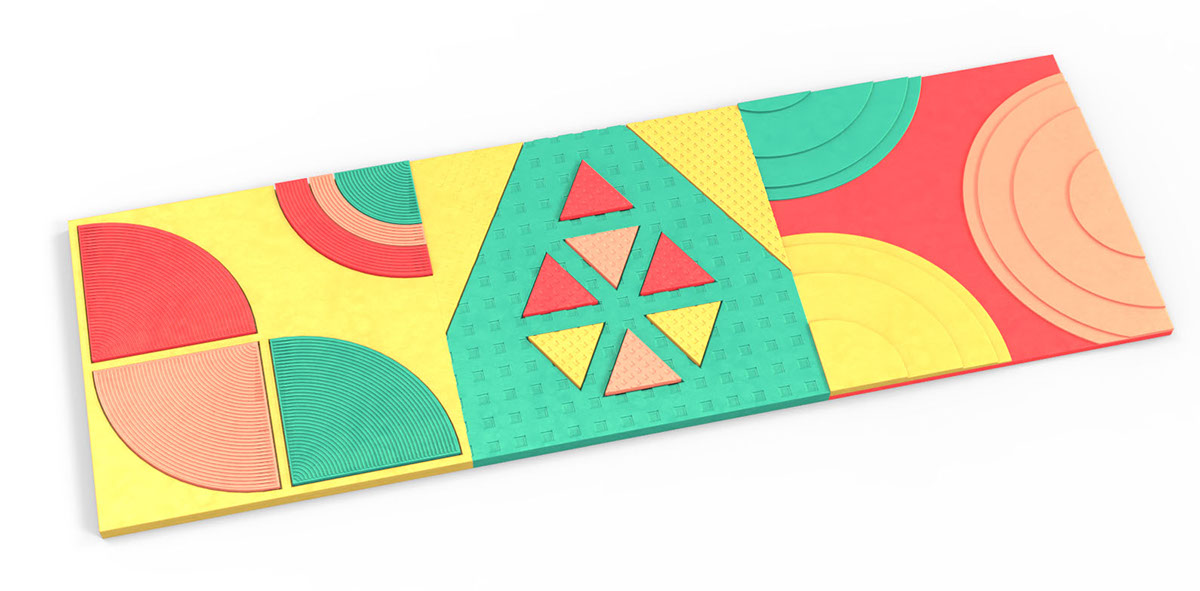
These are the three texturized modules.

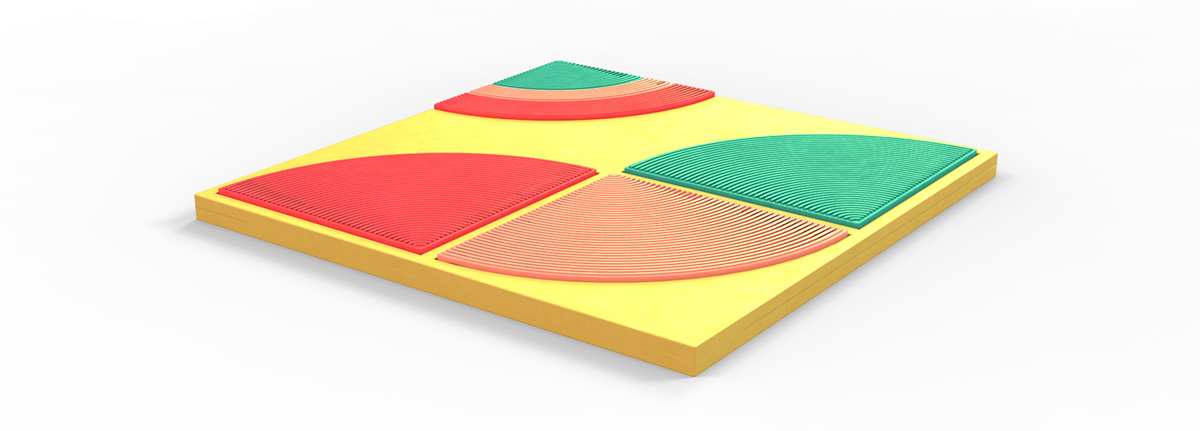


These are the interactive with shape modules; they become the three constructors houses.
The rug becomes part of the story, their scenario.
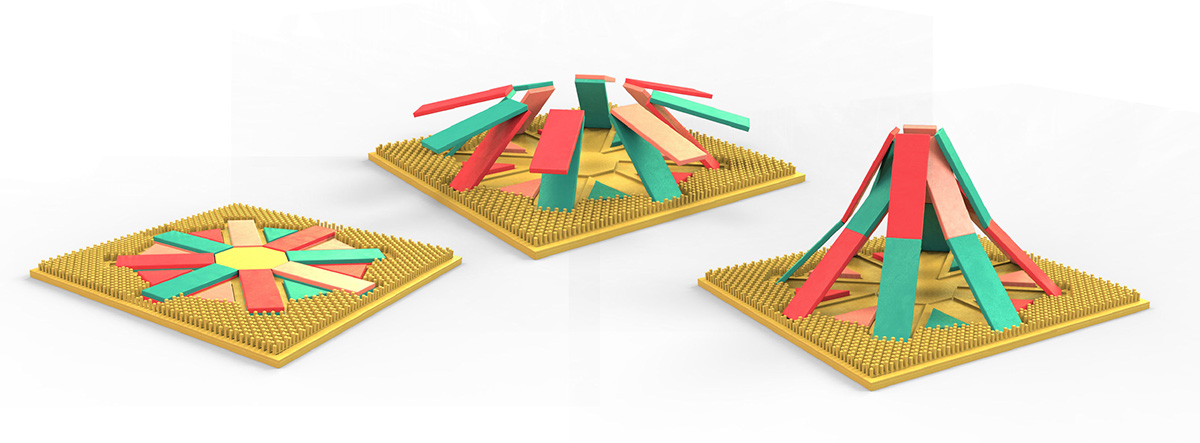
The Thatched House

The Wood House
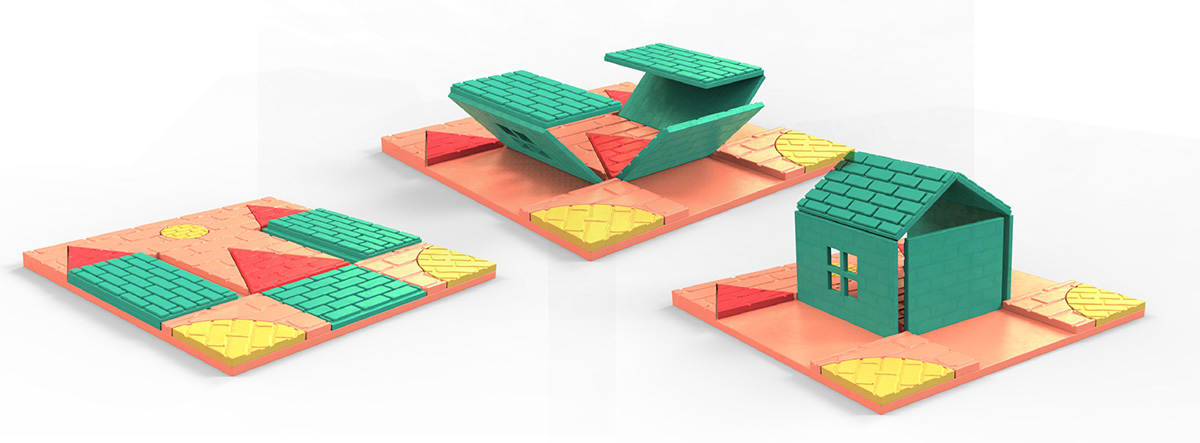
The Brick House

These are the interactive with sound and one works with fitting pieces.
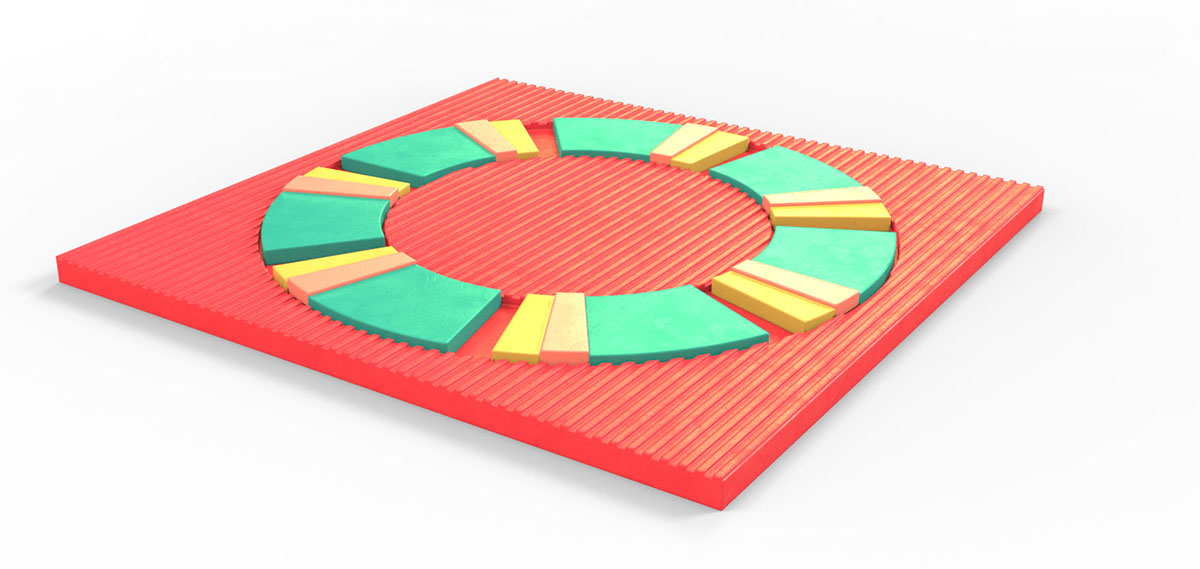
This module has a touch sensor underneath each "key" that connects through wi-fi to an app that can transform the keys into the seven musical notes or any sound the story is about.

This module has a touch sensor underneath each "key" that connects through wi-fi to an app that can transform the keys into any sound.
Since it works with levels and different sizes, we can work with different piches and reverberation, for example.

This module can disassemble, therefore the child can use the elements separatedly during the story or play assemblying it.

Image of an early prototype.
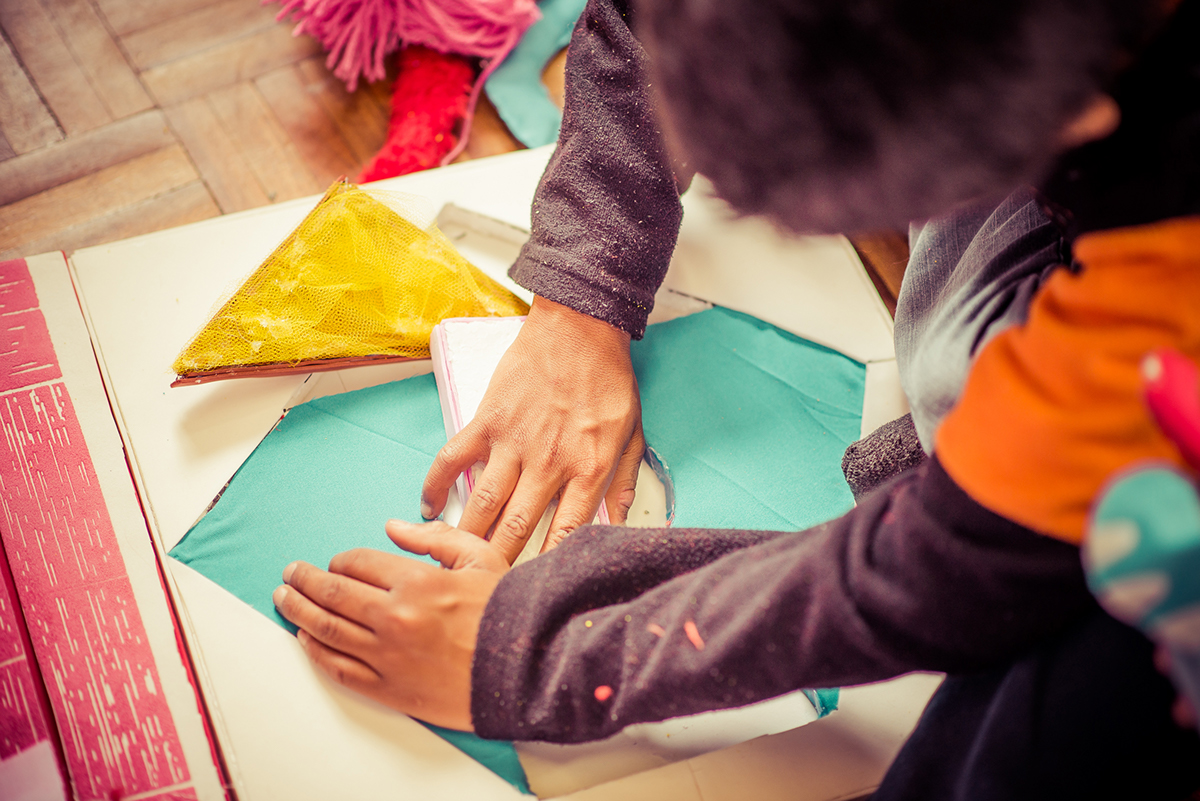
Image of an early prototype.
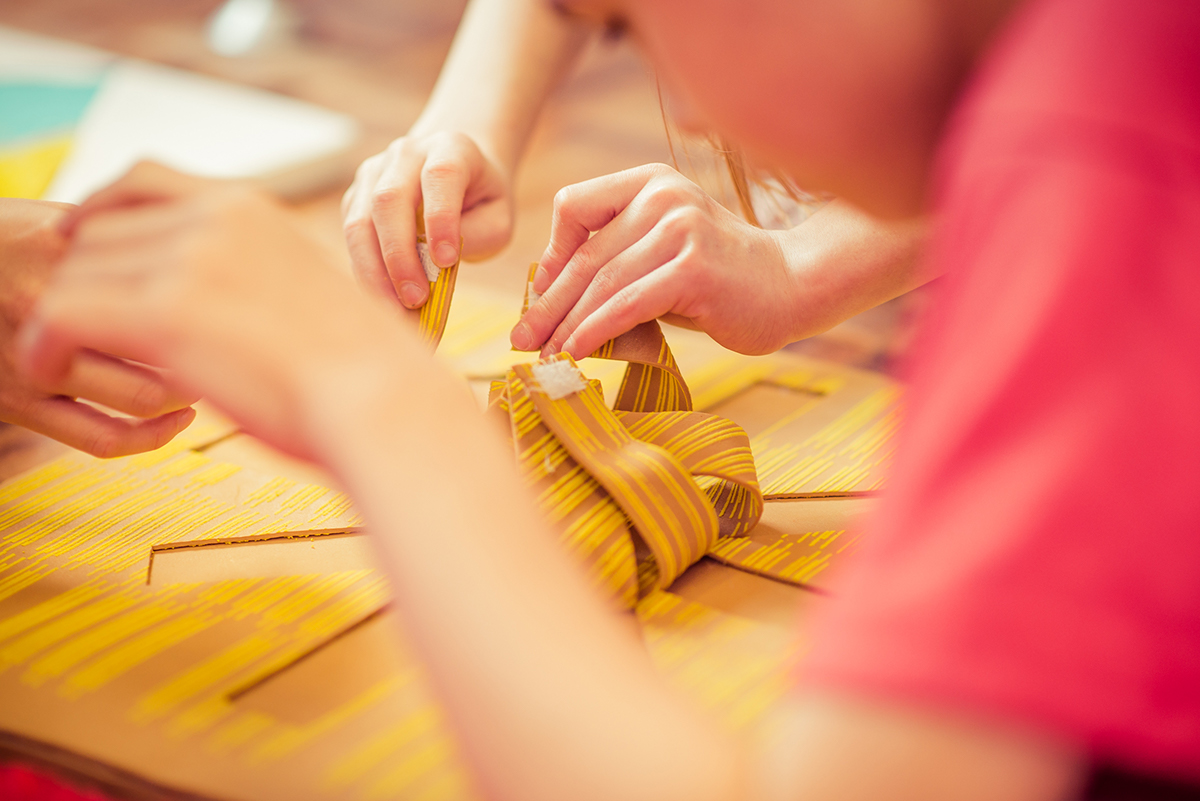
Image of an early prototype.
The Project Name
The name of the project is "SE" because when you use this with a verb (in the Portuguese language) it makes it reflexive. An aproximation for it is the term "yourself" in the English language.
This allowed an adaptation of the name during different moments of the creative process, for example:
The name of the first stage is "Construa-SE" = "Build YOURSELF"
The second stage is named "Conte-SE" = "Tell YOURSELF"
This choice reiterates the empowerment and independence in the creative process for the child.
Visual Identity
The spiral represents evolution and progressive movement, and it can be related to the growth in terms of age, as well as expansion for creativity. The spiral also does not show a specific end, implying that this growing movement is not finite.



These dots represent the word SE in Braille.

How to use it?
To assist in the recognition of the various existing parts for assembly of the game, there is a manual (image below), which presents all the variations of textures, sounds and mounting possibilities. It is indicated that the parent or guardian should assist at this stage, reading the manual and presenting the elements.
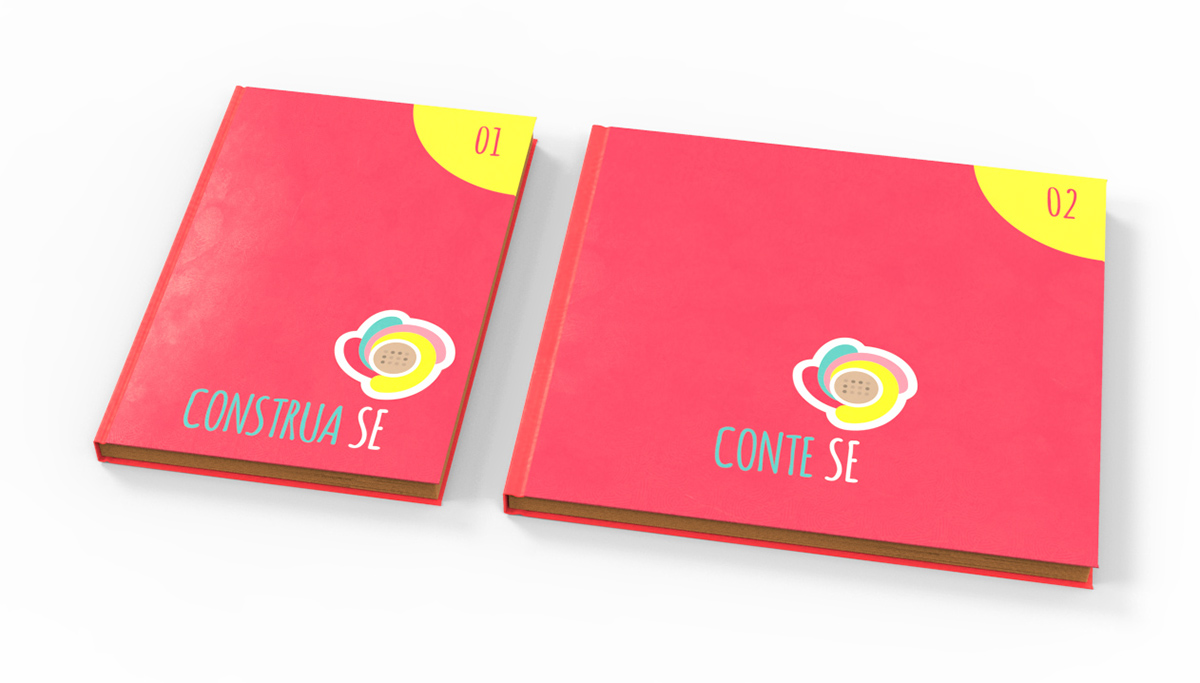

The second accompanying manual presents the narrative of the story. It is explored as a child story, with the information provided little by little, playfully. The image below, the "Friends Builders", presents the story created and exposed in the manual.

Packaging
To store and organize the game, a package was developed.
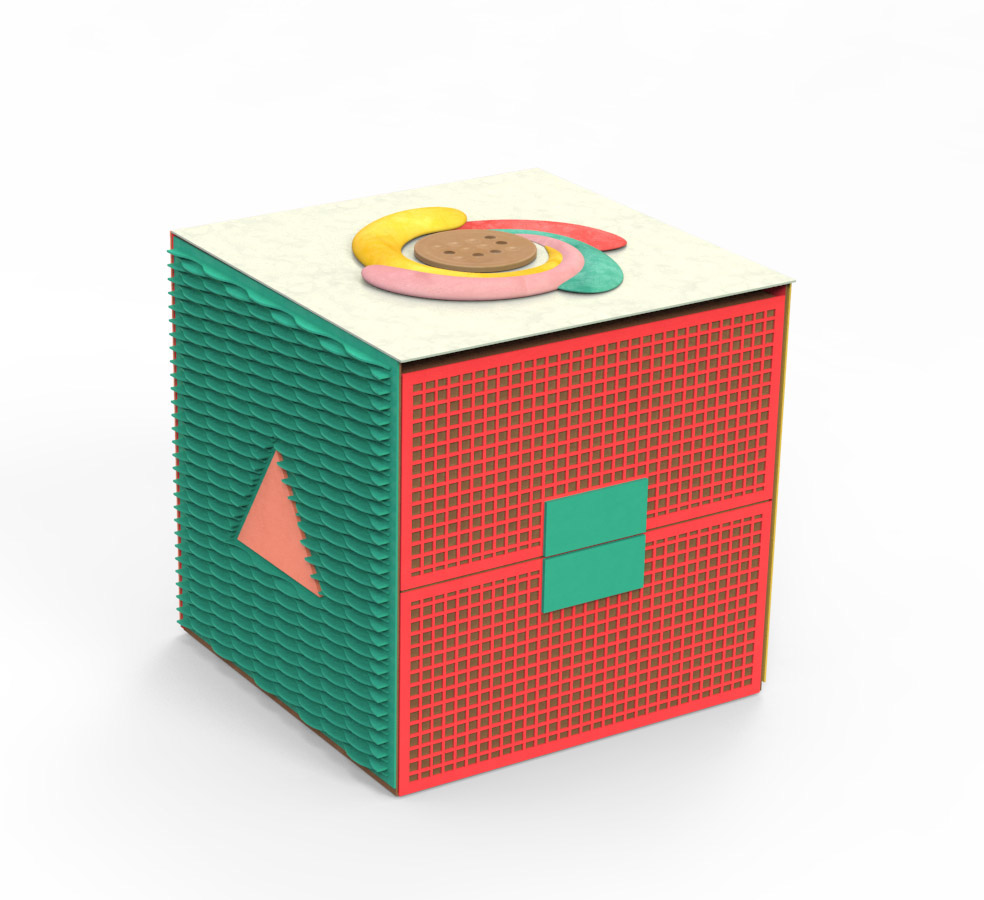
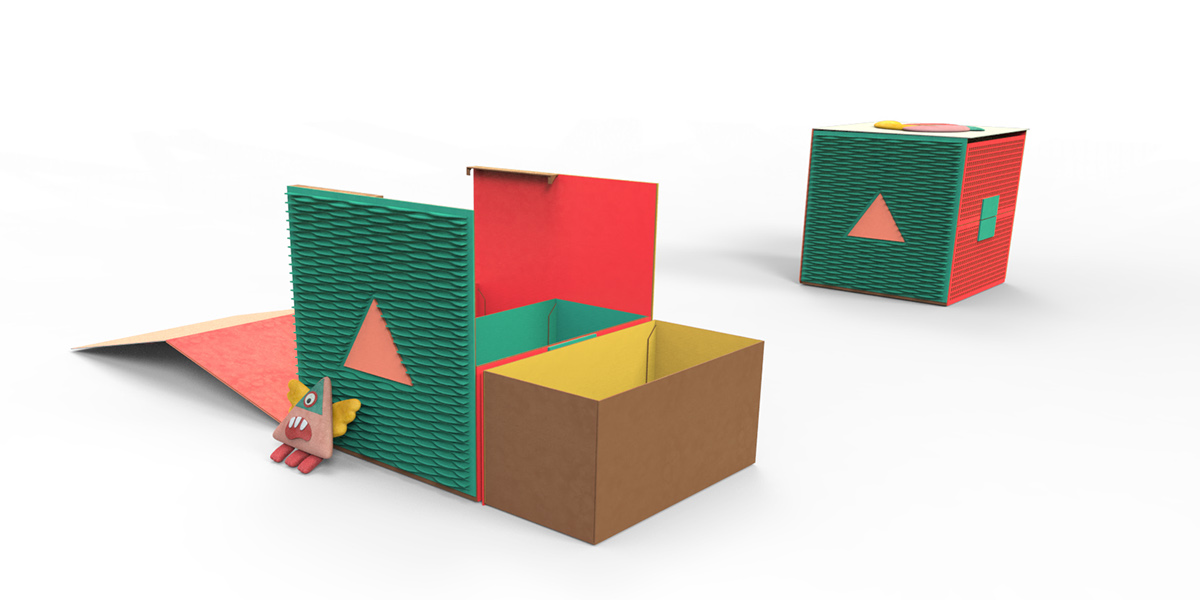
Validation
The process consisted in three steps of validation. Two of them had children with visual impairment using it and giving feedback.


